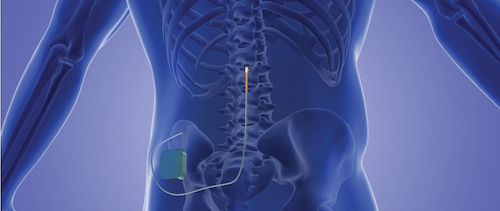How To Manage Chronic Pain With Spinal Cord Stimulation
Chronic pain is a debilitating condition that affects millions of people worldwide. For those suffering from spinal injuries, the pain can be relentless, often leading to a diminished quality of life. Traditional pain management methods, including medication and physical therapy, sometimes fall short of providing lasting relief. However, a breakthrough in medical technology—spinal cord stimulation (SCS)—is revolutionizing the way chronic pain is managed, offering hope to those who once believed they had no options left.
What is Spinal Cord Stimulation?
Spinal cord stimulation involves implanting a small device, similar to a pacemaker, that sends electrical impulses to the spinal cord. These impulses interfere with the nerve signals that communicate pain to the brain, effectively reducing the sensation of pain. This method has been particularly successful in patients who have not responded to other treatments, including those who have undergone spinal injury surgery.
How Does Epidural Stimulation Work?
A specific type of spinal cord stimulation known as epidural stimulation is gaining attention for its potential in pain management and restoring some degree of movement in individuals with spinal cord injuries. Epidural stimulation involves placing an electrode array over the dura (the protective covering of the spinal cord) to deliver precise electrical pulses. This technique shows promising results, particularly when combined with rehabilitation therapies, in helping patients regain voluntary motor control and alleviate chronic pain.
The Benefits of Spinal Cord Stimulation
1. Reduced Dependency on Medication: SCS can significantly reduce the need for pain medications, including opioids, which are associated with numerous side effects and the potential for addiction.
2. Minimally Invasive: The procedure to implant the SCS device is minimally invasive, requiring only a tiny incision. Recovery time is relatively short; most patients can return to normal activities within a few weeks.
3. Customizable Pain Relief: The intensity and location of the electrical impulses can be adjusted to meet the patient's specific needs, offering personalized pain relief.
4. Improved Quality of Life: Many patients report a significant improvement in their ability to perform daily activities and a reduction in pain-related stress and anxiety.
Support Celeste Glover's Journey to Recovery
As we discuss the life-changing potential of spinal cord stimulation, it’s essential to recognize those who are currently fighting to regain their independence. Celeste Glover, a courageous woman facing the challenges of a spinal cord injury, is one such individual. She is on a journey to undergo spinal cord stimulation and stem cell therapy in Guadalajara, Mexico, a procedure that could dramatically improve her quality of life. You can be a part of her journey by contributing to her campaign. Donate to Celeste's journey with On My Feet and help her take the next step towards recovery.
Who is a Candidate for Spinal Cord Stimulation?
Spinal cord stimulation is typically recommended for individuals who have not found relief through conventional treatments such as physical therapy, medication, or surgery. Ideal candidates include those suffering from:
Failed Back Surgery Syndrome (FBSS): Patients who continue to experience pain after undergoing spinal surgery.
Complex Regional Pain Syndrome (CRPS): A chronic pain condition that affects a limb after an injury or surgery.
Peripheral Neuropathy: Damage to the peripheral nerves, often resulting in severe pain and numbness in the limbs.
Spinal Cord Injuries: Individuals with spinal cord injuries who experience chronic pain or loss of motor function.
The Future of Spinal Cord Stimulation
The field of spinal cord stimulation is rapidly evolving, with ongoing research aimed at enhancing the technology and expanding its applications. Future advancements include wireless devices, improved battery life, and more precise targeting of pain signals. Additionally, combining SCS with regenerative therapies such as stem cell treatment holds the potential to not only manage pain but also promote healing and recovery.
Spinal cord stimulation is a powerful tool in the fight against chronic pain, offering hope to those who have struggled to find relief. Whether you are considering this treatment for yourself or a loved one, it’s essential to consult with a healthcare professional to determine if you are a candidate and to explore all available options.
As you reflect on the transformative potential of spinal cord stimulation, we encourage you to support those who are in need. Celeste Glover is on a path to reclaim her life through this innovative treatment. Your donation can make a world of difference. Please donate now to help Celeste stand on her feet again and take a step closer to a pain-free future.




